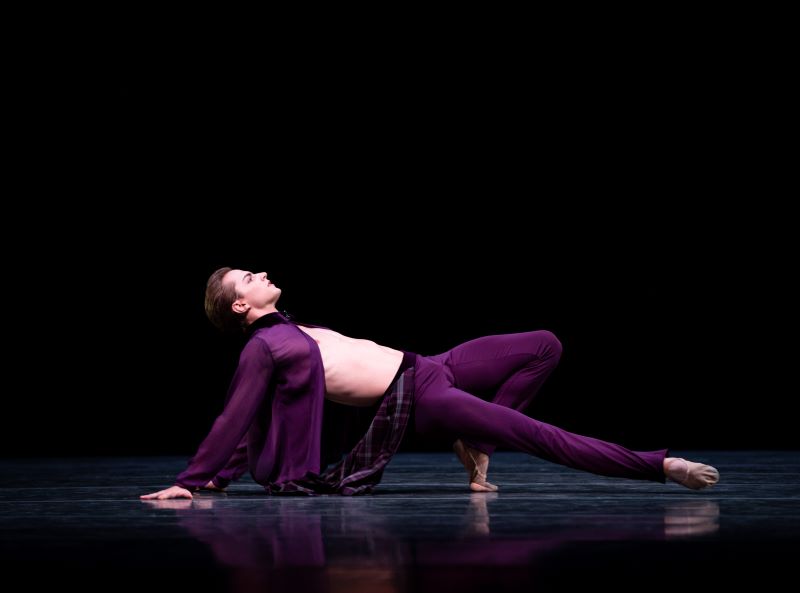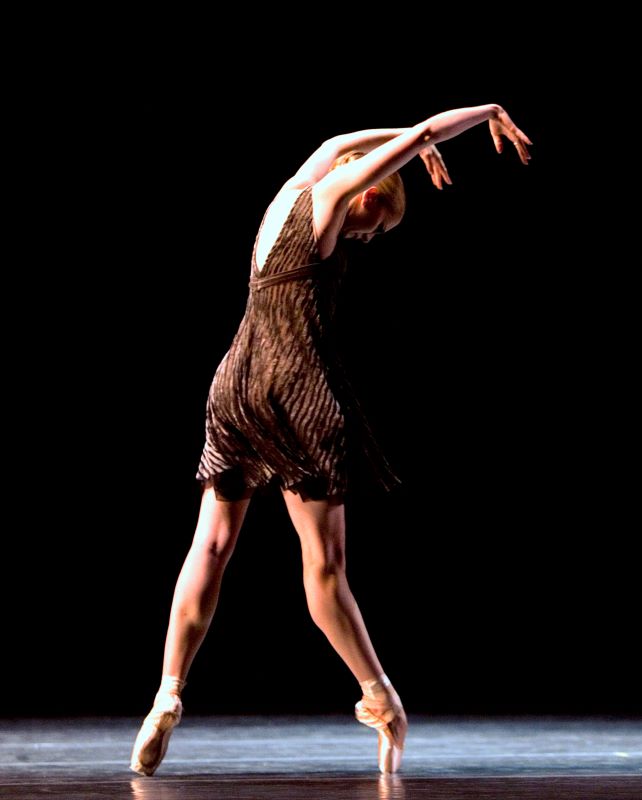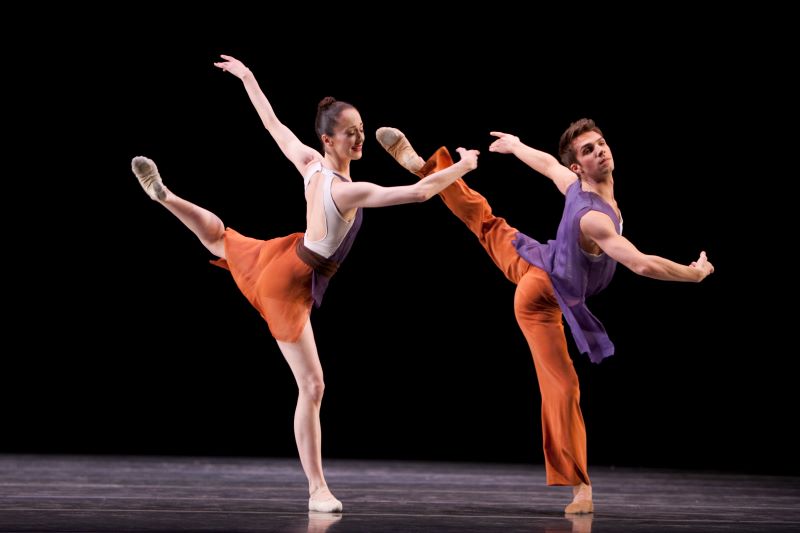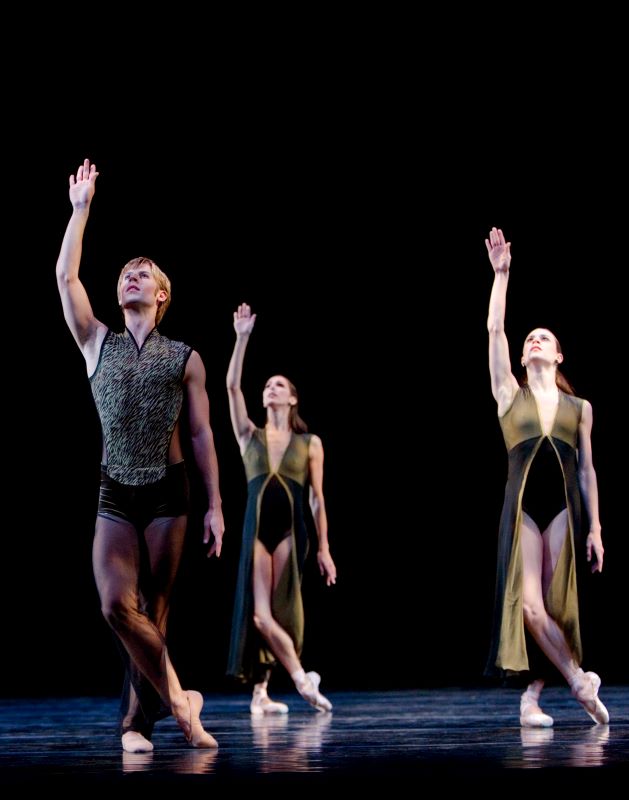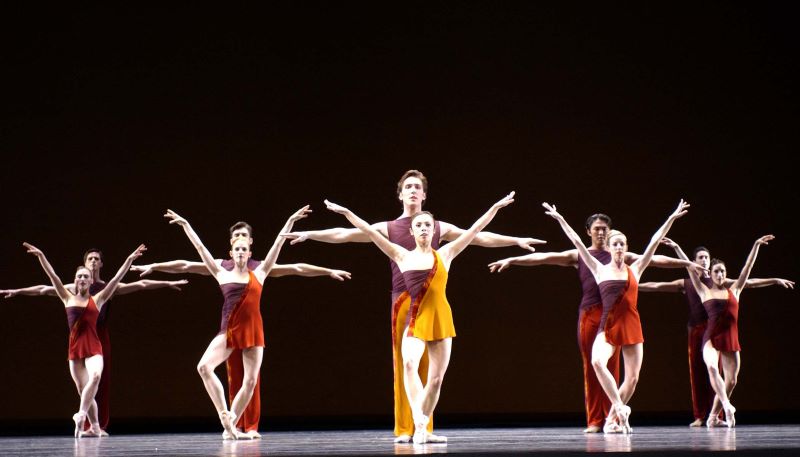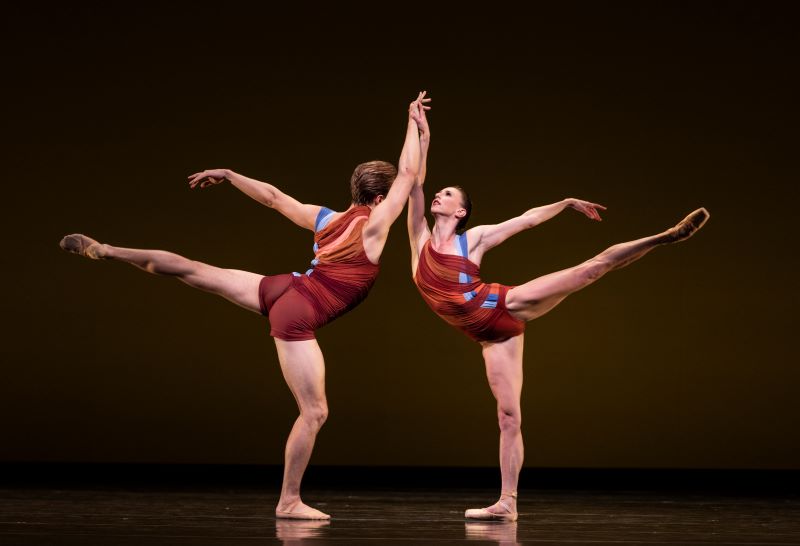About Costume Designer Mark Zappone: “Follow Your Curiosity”
Mark Zappone has designed over 30 costumes for PNB, and he’s worked on many more productions for choreographers like Twyla Tharp, Christopher Wheeldon, and Yuri Possokhov. But Mark didn’t start his career designing costumes for dance. Mark became the accomplished ballet costume designer he is today by following his curiosity and saying “yes” to new opportunities.
Mark originally studied architecture in college but quickly became bored with its abstract nature. He moved into set design and costume design because he could “actually construct things right there.” At Washington State University Pullman (where he went to school), Mark had a lot of opportunities. “There were a lot of projects going on. I just kept raising my hand when they said, ‘Who wants to do this one?’”
After college, Mark came back to Seattle, where he grew up, and started working with small theater companies like Civic Light Opera and ACT Theatre. One day, Mark was alone in the ACT costume shop, and the phone rang. “It happened to be the wonderful Rico Chiarelli [PNB’s former resident lighting designer] on the other line.” Rico asked if anyone from ACT could come help PNB with a production of Coppélia. “I looked around, and there wasn’t anybody else there. So I said, ‘I’ll come.’ That’s how I began with the Pacific Northwest Ballet and the dance world.”
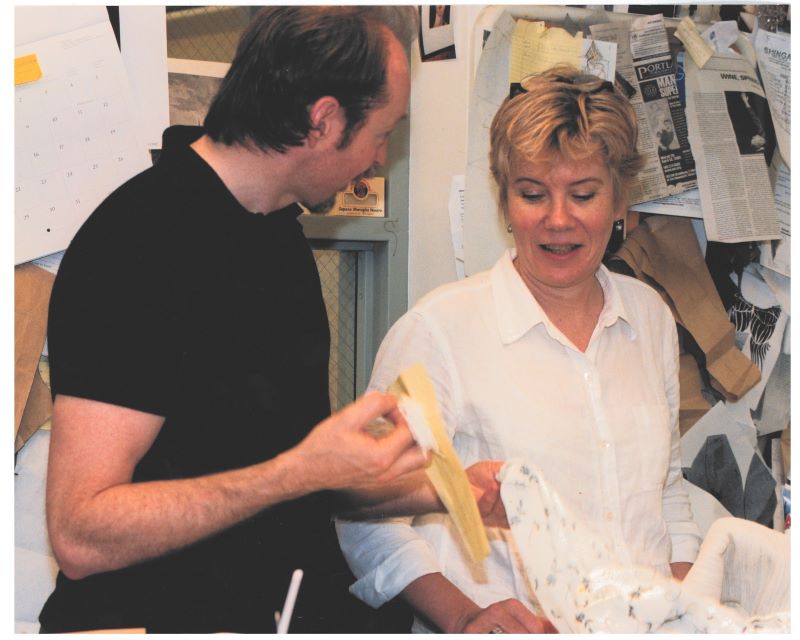
A young Mark in the PNB Costume shop with friend and colleague Larae Theige Hascall, photographer unknown.
When Mark started at PNB, he didn’t know anything about ballet, but that didn’t stop him. “On my first day at PNB, there was no one there to show me anything or teach me anything. I looked around. There were a lot of boxes on the shelves, and they had names of ballets on them that I had never heard of. I just slowly opened up the boxes and thought, ‘Okay, these are black leotards, okay, this is that…’” Mark continued to learn at PNB by raising his hand just as he had in college. “In those days, there were only a few of us in the shop… Whatever needed to be done, we did it. I did dying, I did painting, I did cutting.” Soon, Mark was designing.
Design Process
In those early days, Mark worked with influential choreographer Lucinda Childs. Childs invited Mark to watch a rehearsal, and that invitation has influenced Mark’s approach to designing costumes to this day. “Her asking me to come and watch and see what’s happening instead of just reading something out of the air was so important. I go watch rehearsals as much as I can.” Mark is often inspired by what he sees – whether that’s the movements choreographers are creating, the clothes dancers are wearing in rehearsal, or things he sees in the world. “I always say, ‘Oh, there’s a ballet costume waiting to happen.’”
Mark is a very tactile designer; he will often create his costumes directly on a mannequin. “I might do sketches quickly. But mostly, I love to work on the mannequin. That is my sketch, that is my drawing, to work on the real thing. I start draping things on mannequins and looking for fabrics, or ideas. I feel like I can show the costume better when it’s real, partly because that’s what the proportions will be. That’s the real work.” He’ll also look for his own fabrics and fibers in person; a photo isn’t enough to understand how the fabric will move and interact with a garment. He prioritizes “going out and looking at things and feeling them” when he can.
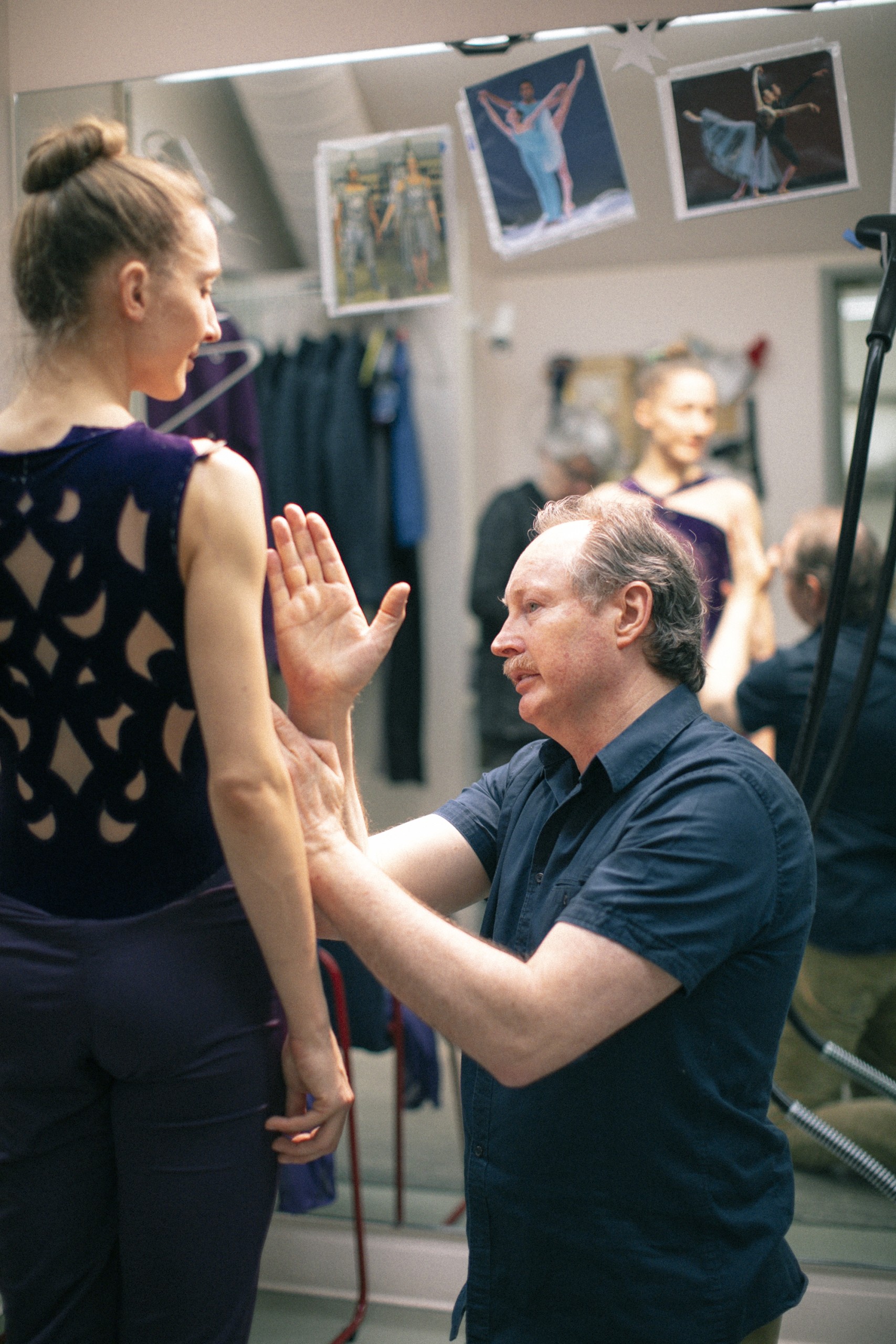
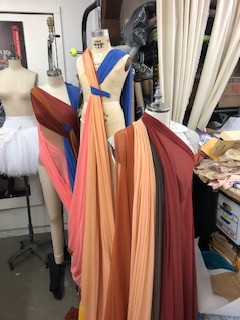
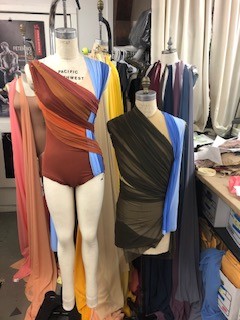
Photos of Mark’s design process – Elizabeth Murphy and Mark Zappone, photo © Lindsay Thomas. Photos of The Veil Between Worlds costumes courtesy of Mark Zappone.
Being flexible is also highly important for Mark’s design process because things can change so quickly. Mark says, “A choreographer might say they want red, and then three weeks later want to do a blue look.” Mark is often asked to do a last-minute project in less-than-ideal circumstances. For example, once Christopher Wheeldon called Mark asking him to design costumes for a gala performance. The twist? Wheeldon was in the airport about to fly out of the country. Mark says, “I threw something on the mannequin, pulled it this way and pulled it that way, and took a picture and sent it. And Christopher says, ‘Yeah, I like that, but maybe a little bit lower there.’ So then I hang up, do it again, and even dye samples while he’s waiting for his plane off to Europe.” For Mark, to design is to be flexible.
Collaboration
It should be no surprise that another important element of Mark’s design process is collaboration. Over the years, he’s learned to work with many different types of choreographers. “Certain choreographers, like Annabelle Lopez Ochoa for example, have specific ideas. So you develop those and you add your own.” Other choreographers might have one element they know they want in the piece. “Once, choreographer Edwaard Liang said, ‘I see red,’ so I put every red piece of fabric I owned in a suitcase, went to New York, and met him in the hotel room. We were throwing things around, he was putting things on, trying things on…” Other choreographers have no idea of what they want, and then Mark will watch rehearsal and talk with them. “I might suggest ‘Let’s listen to the music,’ or ask “Do you have thoughts about what your piece is about? Are there any inspirations that you personally have?’” At the end of the day, Mark is trying to create something with the choreographer. “It’s not about translating it into your own thing. It’s truly about the collaborative spirit.”
That collaborative spirit goes beyond Mark and the choreographer. “I think of the colleagues who are helping me produce the costumes, who are creating the actual physical piece. The collaborative spirit goes all the way to the person who’s cutting it, draping it, or stitching it. I find that fascinating and inspiring.” Mark’s been in that position many times as well, draping or stitching another designer’s work. “I am fascinated by and appreciate building other designer’s projects. That is a great advantage to be able to do both – to not only design but also interpret designers’ work. Collaborating with designers is so worthwhile.” Over the years, he’s built close relationships with many other designers by collaborating with them. “I worked with Jerome Kaplan on Jewels, Giselle, Roméo et Juliette, and at the Ballets de Monte-Carlo. After working with him so frequently, I can interpret his work and have a sense of what fabrics he would want.”
Various costumes Mark has designed for PNB over the years
Favorite PNB Memory
By following his curiosity, Mark went from studying architecture to designing costumes for world-class ballet companies. He remembers an important moment in his career that perfectly illustrates this; Mark was asked to create his first costumes for the tutu ballet George Balanchine’s Themes and Variations.
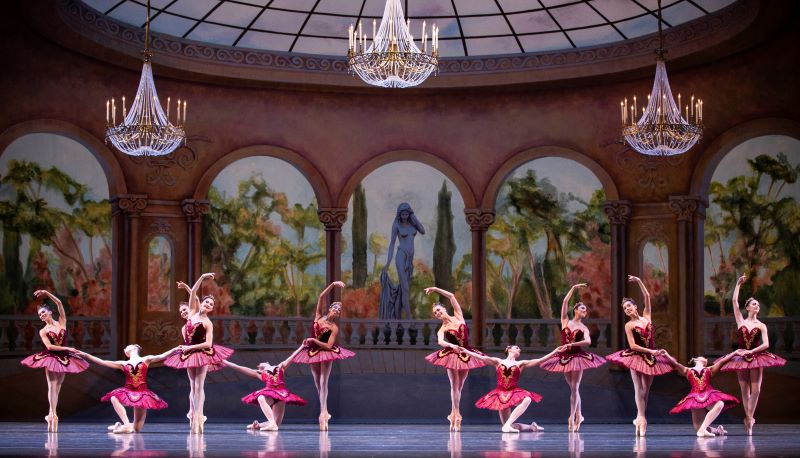
PNB Company dancers in Mark’s costume designs for Themes and Variations on stage, photo © Angela Sterling.
“[Former PNB Artistic Directors] Kent and Francia wanted to see if I could handle such a ballet.” Mark had to give a presentation to prove he could design and construct tutus, which are extremely technical garments. “To prepare, I took my own dime and flew off to Minneapolis to meet a woman who could show me how to make a tutu in a costume shop there. I went, I got my room at the YMCA, took my machine, and worked on that until I figured it out. I went to New York to go to fabric stores I’ve never been to in my life. I spray-painted lace appliques on the street outside the YMCA in the alley! I came back and made my presentation to Kent and Francia, and that was enough to let them believe that we could come up with something together. That was, even then, and even now, a very historical moment for me. Then on opening night, the curtain goes up. And there’s a small gasp from the audience. I’ve never stopped working towards hearing that gasp.”

